Corrosion prevention for galvanized steel pipe welding: After surface treatment, thermally spray zinc.
If on-site galvanizing is not possible, on-site corrosion protection methods can be used: epoxy zinc-rich primer, epoxy micaceous iron intermediate, and polyurethane topcoat. Thicknesses are determined by reference to relevant standards.
Galvanized Steel Pipe Process Characteristics
1. Optimization of Sulfate Galvanizing: Sulfate galvanizing offers advantages such as 100% current efficiency and a rapid deposition rate, unmatched by other galvanizing processes. However, due to the less finely crystalline coating, poor dispersion, and deep-dip coating, it is only suitable for plating pipes and wires with simple geometries. The sulfate zinc-iron alloy electroplating process optimizes the traditional sulfate galvanizing process, retaining only the primary salt, zinc sulfate, while discarding all other components.
An appropriate amount of iron salt is added to the new process formula, transforming the original single-metal coating into a zinc-iron alloy coating. This restructured process not only leverages the advantages of the original process, including high current efficiency and fast deposition rate, but also significantly improves dispersion and deep-dip plating capabilities. Complex parts that previously could not be plated can now be plated on both simple and complex components. Furthermore, the protective performance is 3-5 times higher than that of a single metal.
Production practice has proven that continuous electroplating of wire and pipe produces finer, brighter coatings with a faster deposition rate. The required coating thickness is achieved within 2-3 minutes.
2. Conversion of Sulfate Zinc Plating: Sulfate zinc-iron alloy electroplating retains only the primary zinc sulfate. Other components, such as aluminum sulfate and alum (potassium aluminum sulfate), can be removed by adding sodium hydroxide during bath treatment to form insoluble hydroxide precipitates. Organic additives can be removed by adsorption using powdered activated carbon. Tests have shown that aluminum sulfate and potassium aluminum sulfate are difficult to completely remove in one go, and while they do affect the coating's brightness, the effect is not significant and can be eliminated with carryover. The coating's brightness is then restored. After treatment, the solution can be replenished according to the composition required for the new process, completing the conversion.
3. Fast Deposition Rate and Excellent Protective Performance: The sulfate electroplating zinc-iron alloy process boasts a current efficiency of up to 100%, achieving a deposition rate unmatched by any other galvanizing process. Fine tubes can operate at speeds of 8-12 m/min, with an average coating thickness of 2 m/min, a feat difficult to achieve with continuous galvanizing.
The coating is bright, fine, and pleasing to the eye. Testing according to the national standard GB/T10125, "Artificial Atmosphere Test - Salt Spray Test," revealed intact coatings with no changes after 72 hours, and a small amount of white rust appeared on the coating surface after 96 hours.
4. Unique Clean Production: The sulfate electroplating zinc-iron alloy process for galvanized steel pipes utilizes perforations between production troughs, eliminating any carryover or overflow of the solution. Each production process consists of a circulation system.
The solutions in each tank, including the acid and alkali solutions, plating solution, polishing solution, and passivation solution, are recycled and reused without leakage or discharge outside the system. The production line has only five cleaning tanks, which are recycled and discharged regularly. This production process, especially since no cleaning is done after passivation, produces no wastewater.
5. Special Features of Electroplating Equipment: Galvanized steel pipe and copper wire plating are both continuous electroplating processes, but the plating equipment differs. The plating tank is designed for the slender shape of iron wire, with a long, wide, and shallow tank. During electroplating, the wire emerges from the perforations and spreads out in a straight line on the liquid surface, maintaining spacing. However, galvanized steel pipe, unlike iron wire, has its own unique characteristics, and the tank equipment is more complex. The tank consists of two parts: the upper part is the plating tank, and the lower part is the solution circulation and storage tank, forming a trapezoidal shape that is narrow at the top and wide at the bottom. The plating tank contains a channel for the galvanized steel pipes to be electroplated. Two through-holes at the bottom of the tank connect to the storage tank below, and connect to the submersible pump to form a plating solution circulation and reuse system.
Thus, like iron wire electroplating, the plating process for galvanized steel pipes is dynamic. However, unlike iron wire electroplating, the plating solution for galvanized steel pipes is also dynamic.
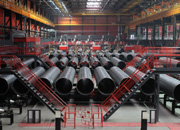 Threeway Steel is known as a professional supplier engaged in manufacturing and distributing a wide range of steel pipe, and our headquarter located the central part of China – Hunan and six associated factories throughout China.
Threeway Steel is known as a professional supplier engaged in manufacturing and distributing a wide range of steel pipe, and our headquarter located the central part of China – Hunan and six associated factories throughout China.
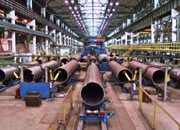 Threeway Steel is known as a professional supplier engaged in designing, manufacturing and distribution of a wide range of steel products with the headquarter located the central part of China – Hunan and six associated factories throughout China.
Threeway Steel is known as a professional supplier engaged in designing, manufacturing and distribution of a wide range of steel products with the headquarter located the central part of China – Hunan and six associated factories throughout China.
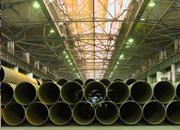 Threeway Steel is known as a professional supplier engaged in designing, manufacturing and distribution of a wide range of steel products with the headquarter located the central part of China – Hunan and six associated factories throughout China.
Threeway Steel is known as a professional supplier engaged in designing, manufacturing and distribution of a wide range of steel products with the headquarter located the central part of China – Hunan and six associated factories throughout China.
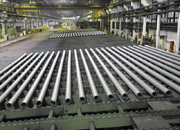 Threeway Steel is known as a professional supplier engaged in designing, manufacturing and distribution of a wide range of steel products with the headquarter located the central part of China – Hunan and six associated factories throughout China.
Threeway Steel is known as a professional supplier engaged in designing, manufacturing and distribution of a wide range of steel products with the headquarter located the central part of China – Hunan and six associated factories throughout China.
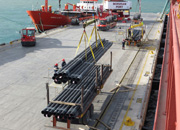 Threeway Steel is known as a professional supplier engaged in designing, manufacturing and distribution of a wide range of steel products with the headquarter located the central part of China – Hunan and six associated factories throughout China.
Threeway Steel is known as a professional supplier engaged in designing, manufacturing and distribution of a wide range of steel products with the headquarter located the central part of China – Hunan and six associated factories throughout China.

